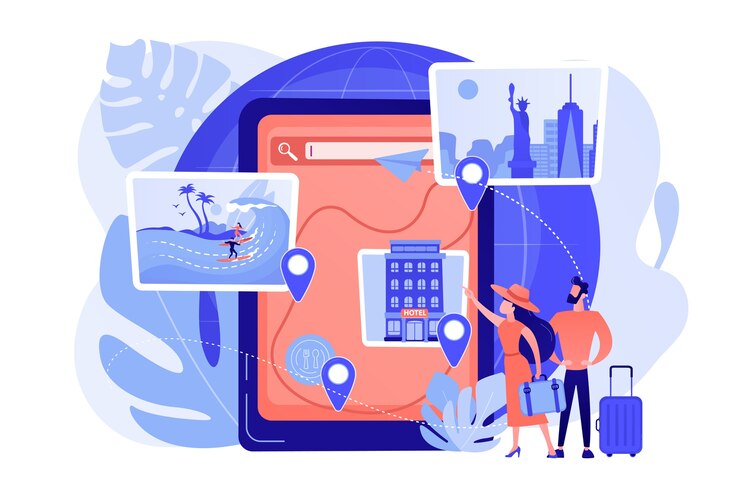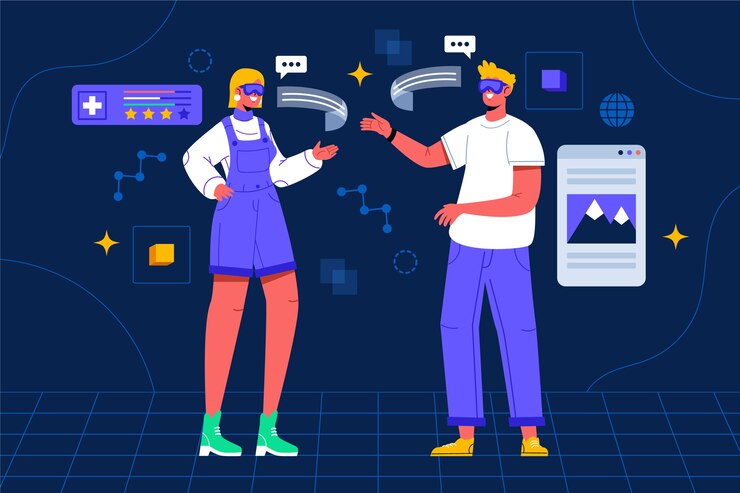The Evolution of Virtual Reality in Education
Virtual Reality has evolved significantly since its inception, transitioning from a niche technology primarily used in gaming and entertainment to a versatile tool with applications in various fields, including education. The increasing affordability of VR hardware, such as headsets and motion controllers, along with the development of sophisticated software platforms, has made VR more accessible to educators and students alike. This evolution is paving the way for VR to become an integral part of modern education.
Benefits of Virtual Reality in Education
- Immersive Learning Experiences: One of the most compelling benefits of VR in education is its ability to create immersive learning experiences. By placing students in a virtual environment, VR can make abstract concepts tangibl. provide a sense of presence that traditional learning methods cannot achieve. For instance, students can explore historical sites.
- Enhanced Engagement and Motivation: VR has the potential to significantly boost student engagement and motivation. The interactive nature of VR encourages active participation, making learning more enjoyable and stimulating.
- Improved Retention and Recall: Studies have shown that immersive experiences can enhance memory retention and recall. VR allows students to learn by doing, which can lead to better comprehension and longer-lasting knowledge. For example, medical students can practice surgical procedures in a virtual environment, reinforcing their skills through repeated, hands-on practice without the risks associated with real-life surgeries.
- Personalized Learning: VR can cater to individual learning styles and paces, providing a personalized learning experience. Adaptive learning algorithms can adjust the difficulty level. type of content based on the student’s progress and preferences. This customization helps ensure that each student receives the appropriate level of challenge and support, maximizing their learning potential.
- Safe Learning Environment: VR provides a safe space for students to experiment and make mistakes without real-world consequences. This is particularly valuable in fields such as chemistry, engineering, and medicine, where mistakes can be costly or dangerous. By practicing in a virtual environment. students can build confidence and competence before applying their skills in the real world.
Applications of Virtual Reality in Education
- K-12 Education: VR can enhance K-12 education by bringing subjects to life and making learning more interactive. For example, in history classes, students can virtually visit ancient civilizations, witnessing historical events and understanding the context of different eras. In science classes, they can explore the intricacies of ecosystems, conduct virtual experiments, and visualize complex processes like cell division or the water cycle.
- Higher Education: In higher education, VR can provide advanced simulations and virtual labs that are often too expensive or impractical to create in the real world. Engineering students can design and test prototypes in a virtual environment, while medical students can perform virtual dissections. practice diagnostic techniques. VR can also facilitate remote collaboration among students and professors, allowing for virtual study groups and international academic exchanges.
- Vocational Training: VR is particularly beneficial for vocational training, where hands-on experience is crucial. For instance, aspiring pilots can use flight simulators to practice takeoffs, landings, and emergency procedures. Similarly, construction workers can train on virtual building sites, learning how to operate heavy machinery and follow safety protocols. This practical training can improve job readiness and reduce the risk of accidents.
- Special Education: VR can offer tailored learning experiences for students with special needs. For example, VR can create controlled environments for students with autism, helping them develop social skills and cope with sensory overload. VR can also provide accessible learning materials for students with physical disabilities, allowing them to explore environments and engage in activities that might be challenging in the real world.
- Language Learning: VR can immerse students in a virtual environment where they can practice a new language through real-life scenarios. By interacting with virtual native speakers and exploring cultural contexts, students can improve their language skills and gain a deeper appreciation for the culture associated with the language.
Challenges of Implementing Virtual Reality in Education
- Cost and Accessibility: One of the primary challenges of implementing VR in education is the cost of VR hardware and software. High-quality VR headsets, computers capable of running VR applications, and the development of educational content can be expensive. While prices are gradually decreasing, the initial investment can still be a barrier for many educational institutions.
- Technical Issues: VR technology requires robust hardware and software infrastructure. Issues such as lag, low resolution, and motion sickness can hinder the learning experience. Educational institutions need to ensure they have the necessary technical support and infrastructure to maintain and troubleshoot VR systems.
- Content Development: Developing high-quality educational VR content is time-consuming and requires specialized skills. Educators and developers need to collaborate closely to create content that is pedagogically sound and engaging. Additionally, there is a need for a diverse range of VR educational content to cater to different subjects and educational levels.
- Teacher Training: Effective integration of VR in education requires teachers to be familiar with the technology and its applications. Professional development and training programs are essential to equip educators with the skills and confidence to use VR tools effectively. Teachers need to understand how to integrate VR into their lesson plans, manage VR activities, and assess student performance in virtual environments.
- Equity and Inclusion: Ensuring that all students have equal access to VR technology is a significant challenge. Disparities in access to technology can exacerbate existing educational inequalities. Schools and educational institutions need to consider strategies to make VR accessible to all students, including those from low-income backgrounds.
Case Studies and Examples
- Stanford University’s Virtual Human Interaction Lab: Stanford University’s Virtual Human Interaction Lab (VHIL) is at the forefront of researching and developing VR applications in education. One notable project is the use of VR to teach empathy. In this program, students experience life from the perspective of others, such as a homeless person or someone with a disability. This immersive experience helps students develop a deeper understanding and empathy for different social issues.
- Google Expeditions: Google Expeditions is a VR platform that allows teachers to take students on virtual field trips. With a VR headset, students can explore places like the Great Barrier Reef, the surface of Mars, or the inside of the human body. This platform has been widely adopted in K-12 schools and has proven effective in making learning more engaging and interactive.
- Case Western Reserve University’s HoloAnatomy: Case Western Reserve University, in collaboration with the Cleveland Clinic, developed the HoloAnatomy app using Microsoft’s HoloLens. This VR app allows medical students to study anatomy using 3D holograms of the human body. Students can interact with these holograms, view different anatomical structures in detail, and understand the spatial relationships between organs and systems.
- Welding Training at Oklahoma State University Institute of Technology: Oklahoma State University Institute of Technology uses VR to train students in welding. The VR welding simulator provides a realistic training environment where students can practice their skills without the risks and costs associated with traditional welding training. This innovative approach has led to improved training outcomes and increased student confidence.
Future Prospects of Virtual Reality in Education
The future of VR in education looks promising, with continued advancements in technology and increasing adoption by educational institutions. Here are some potential developments that could shape the future of VR in education:
- Widespread Adoption and Integration: As VR technology becomes more affordable and accessible. its adoption in education is expected to grow. Schools and universities will increasingly integrate VR into their curricula, providing students with more immersive and interactive learning experiences.
- Advancements in VR Hardware: Future advancements in VR hardware, such as lighter and more comfortable headsets, higher resolution displays, and improved motion tracking, will enhance the overall VR experience. These improvements will make VR more user-friendly and reduce barriers to adoption.
- AI-Driven VR Content: Artificial Intelligence (AI) has the potential to revolutionize VR content creation. AI can be used to develop adaptive learning environments that respond to students’ actions and provide personalized feedback. AI-driven content can also enable more complex simulations and interactive scenarios, further enhancing the educational value of VR.
- Collaboration and Social Learning: The development of multi-user VR environments will enable collaborative and social learning experiences. Students from different parts of the world can come together in a virtual classroom, work on group projects.
- Integration with Other Technologies: The integration of VR with other emerging technologies, such as augmented reality (AR), mixed reality (MR), and the Internet of Things (IoT), will create even more powerful educational tools. For example, AR can overlay digital information onto the real world, enhancing VR simulations and providing additional layers of context and information.
- Lifelong Learning and Professional Development: VR will play a crucial role in lifelong learning and professional development. Adults can use VR to acquire new skills, undergo training, and stay updated with industry developments. This flexibility and accessibility will make continuous learning more feasible and effective.





